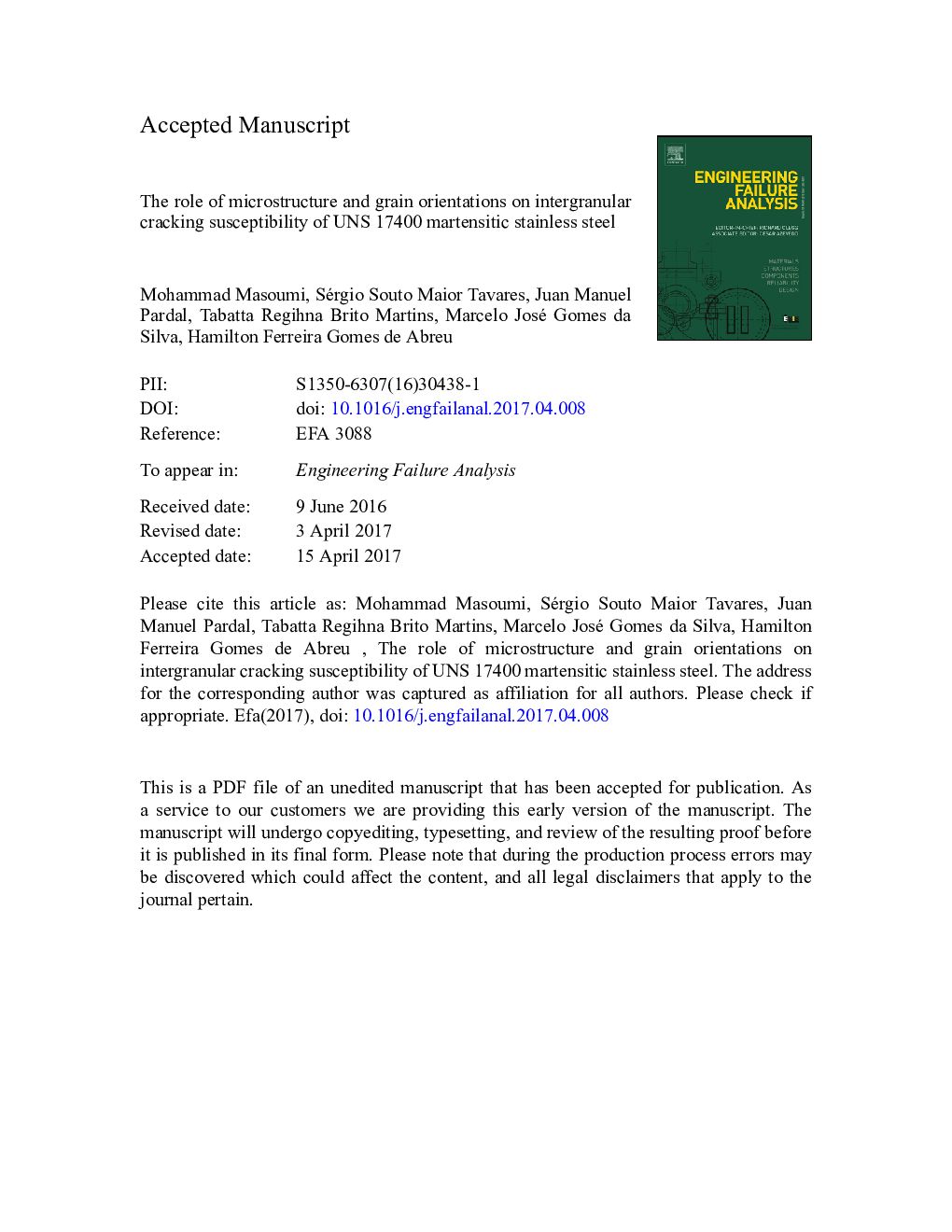| Article ID | Journal | Published Year | Pages | File Type |
|---|---|---|---|---|
| 5013548 | Engineering Failure Analysis | 2017 | 26 Pages |
Abstract
The aim of this work was to investigate the role of crystallographic orientations and grain boundary characteristics as a new approach to controlling the intergranular cracking (IGC) susceptibility. In this respect, hydrogen cathodic charging under two different current densities was carried out on 17-4 pH steel (H900 condition) in order to search for correlations between intergranular corrosion and microstructure, inclusions, and grain orientations. Then, to emphasize the importance of crystallographic orientation in IGC, hydrogen cathodic charging was carried out on 17-4 pH steel in solution condition, in which grains oriented with {110} and {111} parallel to the normal direction (ND) are dominant. The results showed that a reduction in the fraction of undesired {001}//ND grains and development of {110}, {112}, and {111}//ND texture components improved the IGC resistance. In addition, a higher fraction of low angle and special boundaries with low internal energy due to better compatibility between adjacent grains was observed in the uncracked sample and led to increased IGC resistance.
Keywords
Related Topics
Physical Sciences and Engineering
Engineering
Industrial and Manufacturing Engineering
Authors
Mohammad Masoumi, Sérgio Souto Maior Tavares, Juan Manuel Pardal, Tabatta Regihna Brito Martins, Marcelo José Gomes da Silva, Hamilton Ferreira Gomes de Abreu,
